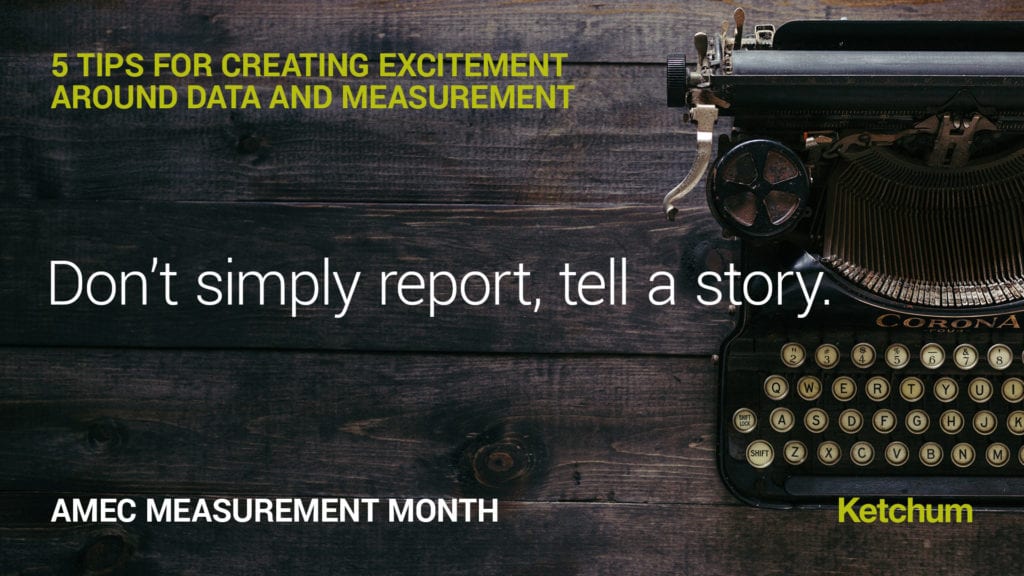As measurement experts, we simply love data and measurement techniques, and we get excited about the “magic” hidden within the numbers and the possibilities they provide. To anyone else, data has the potential to be overwhelming when not presented properly.
Have you ever heard, “I don’t have the time to look into data. I have to get my marketing activities out on the street fast”? To help anyone who is familiar with this mindset, we took inspiration from November’s AMEC Measurement Month and collected five tips and tricks to get everyone excited for data and measurement techniques. Let’s get started!

1. Dress up your data so it gets the attention it deserves:
Often times, raw data won’t appeal to the visual and creative minds amongst us. Everyone processes information differently, so cast the widest net by presenting your measurement outcomes in a beautiful, appealing and exciting way. Pour your data into a graphic template that helps spruce things up and makes data more readable and usable, i.e., by pulling the relevant information straight from your data set into graphs. For the final touch, create a nice reporting design using tools like Canva. Another option is to use data visualization tools and dashboards like Tableau or Power BI, which come in handy with big sets of data and multiple views. Also, never forget to drop a line about the insights and indicated actions you have found.
2. Don’t simply report, tell a story:
If your colleague is not a data-person, don’t put the main focus of your report on the numbers and graphs – rather, take them by the hand and lead them through the story the numbers are telling. The main part should be about the insights and recommended actions you draw out of the data set. It’s all about creating a self-explanatory and tangible document. This will not only help them understand the data, but also communicate the insight internally even without you by their side.
3. Connect data with business goals:
It’s your job to make everyone understand that data is the fuel for decision-making power. It shows which activity hit the sweet spot and what they still have to adapt to enhance outcomes and reach business goals. It’s the insight drawn out of the dataset that enables any team to make growth and progress happen, and at the same time stop all activities that don’t have a measurable impact on business goals – ideally all in real-time.
4. Show what’s in it for them:
The goal should be to make your colleague picture themselves reaching that one thing they desire that was possible through data measurement. This may be internal or external recognition, a promotion, outperforming business goals or something else – you need to uncover their goal and show them how to reach it using measurement.
5. Educate:
Last but not least, it’s time to take away any remaining reservations toward data. As humans, we tend to avoid thigs we don’t know or don’t understand. How to go about it? Educate, take some time to explain the metrics, show which action triggers the count and go directly into the tools to show where they come from: this way everyone can connect the information to the visual design of the board, which makes it a lot easier to remember and understand.
Now go spread some measurement joy!
Reach out to us with any follow-up questions, and stay tuned to the Ketchum Blog for more valuable data and measurement content to kick off 2020 the right way.




